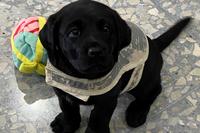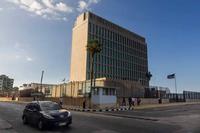
The Associated Press raised a hoopla a couple of weeks ago about the use of the Vietnam-era E/A-6B Prowler to blast IEDs electronically from the sky. Many DT readers argued there was nothing new about the revelation, but as far as the mainstream press goes, it was new to the general public.
The Navy (and Marine Corps) is only too happy to be reaching down from the air to help their brethren on the ground however they can in the counter-IED fight both in Iraq and Afghanistan using Prowlers, Hornets, Harriers to spot roadside bombs or blow them up.
But the Air Force is starting the grumble about this unglamorous work.
A former Defense News colleague of mine pulled out some interesting quotes from a speech delivered by Air Force Air Combat Command chief, Gen. Ron Keys, last week whining about the effectiveness of aerial observation by his jets in pinpointing IEDs.
Aerospace Dailys Mike Fabey reports:
Using unmanned aerial vehicles (UAVs) and pod-equipped combat jets to find improvised explosive devices (IEDs) is often a misuse of time and resources, said U.S. Air Force Gen. Ronald Keys, commander of Air Combat Command.
Often, requests for airborne surveillance are based on the assumption that such aircraft help find IEDs and save ground forces from such attacks, he said. Certain military leaders feel they need the full-motion video feeds to locate the explosives. The truth, he said, is much different.
Based on Air Force analysis, the number of IEDs found by UAVs, surveillance aircraft or combat jets outfitted with advanced targeting pods per 100,000 flight hours is very low, according to Keys. "It's a waste," Keys said June 20 during a morning keynote speech at the Transformation Warfare 07 conference and exhibit in Virginia Beach, Va
Keys said ACC has developed a "concept of deployment" to help fight IEDs that is air-centric "to a certain point." Without going into specifics, he said, "We ought to be attacking the system - to the left of 'the bang,'" meaning the process before the IED is emplaced. What needs to be looked at is the network, "not the thing that's buried out there," he said.
Flying pod-outfitted F-16s up and down streets no one will be on for another 12 hours will not help the IED fight, he said. Looking for buried IEDs in Iraq in that fashion is not the best way to stop attacks. "It's a junkyard out there," he said, adding there are too many false positives.
Sounds like the Air Force wants to tell ground commanders to shove it when they call for eyes on a hotspot.
The statistics can be manipulated to say anything the Air Force wants, but experience shows infrared targeting pod-equipped aircraft of any kind on a normal close air support patrol are invaluable in the IED fight for units maneuvering their way through insurgent strongholds. Its like radioing for a 500 pounder but a lot less lethal.
When a patrol sees a potential IED, the call goes up to any aircraft within range to scan the area with their IR scope. The components of an IED give off heat, making it pretty easy for the jet to give some reassurance that the pile of bricks is a trap or just that: a pile of bricks. The IED is then either bypassed or another call goes out for the explosive ordnance disposal unit to dismantle the bomb.
Instead of lending this passive helping hand, Keys wants to attack the system to the left of the bang in other words, he wants to destroy the factory, the trigger man or the explosive storage areas with bombs of his own.
Thats pretty sexy stuff and makes for better headlines (if anyone bothers to report it). But with the Air Forces recent bad press on civilian deaths in Afghanistan, it might be worth keeping the non-lethal counter-IED mission on the front burner, pulling the left of the bang card out only in extreme circumstances. The grunts will thank Airmen just as well.
(Gouge: NC)
-- Christian








